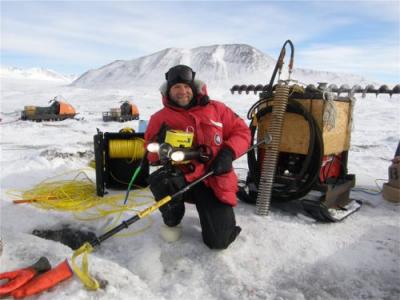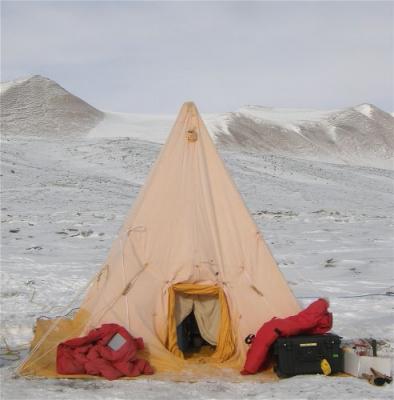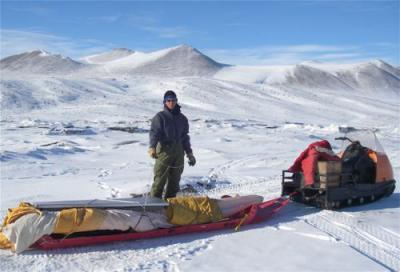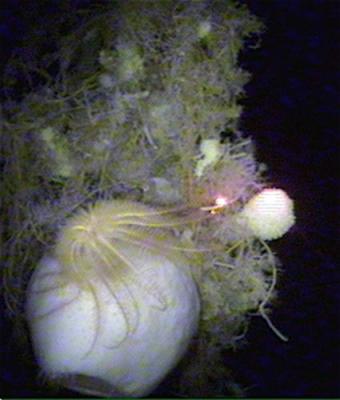"Paul Dayton’s contributions to Scripps and the science of marine ecology have been virtually unparalleled,” said Scripps Institute of Oceanography Director Charles Kennel.
Dayton’s career has been motivated by the belief that one must understand nature to protect it, and he has attempted to use analytical techniques to understand marine community systems, reports a 2002 Scripps News Release. Dayton spent more than 50 months in McMurdo Sound, Antarctica, performing research during more than 500 dives under the ice. The scientific papers resulting from these research projects are largely believed to have set the standard for Antarctic undersea ecology.

These photos, from the SCINI website, show Paul during some of his Antarctic work. Notice that he is wearing a wetsuit! When you show these pictures to Antarctic divers, they immediately start to shiver!
Stacy has been using Paul Dayton’s field notebooks from Antarctica to find some of the structures he emplaced 40 years ago. Because GPS wasn’t invented then, and compasses don’t work well here as we are so close to the South Pole, Paul used "line-of-sight” information to locate the structures.
Try this: Go outside into an open area and then line up landmarks (trees, rocks, building or mountain tops) in two different directions so you can "X” your spot. Then tell a friend what you lined and see if they can figure out where you were originally standing from your directions. It isn't very easy! And that is what Stacy has been doing on the sea ice to determine where to GPS the locations and then to drill them!
Today, VideoRay went down the location termed "Deep" to see if it could find some of these structures that haven't been seen since they were emplaced in 1967.
VideoRay's first mission though was to pick up, using a hook, the ice chipper bar that Marcus had dropped in the hole yesterday when he was chipping the ice out of it!

VideoRay managed to hook and recover the ice chipper bar!
The SCINI team is now operating R.O.V. dives out of a Scott Tent since our Tucker is back in McMurdo.

Scott Tent with 4 computers, and VideoRay equipment inside
When we move dive holes, we take down and pack the Scott tent (which hasn't changed its basic design in over 100 years) to the sled and haul it with a snowmobile to the next site.

Stacy is ready to move the Scott tent to the next location
Once we have the tent set up and have three open holes drilled through the sea ice (one that is big enough for VideoRay and two for navigation) then we can commence operations.
We are using VideoRay to find and map the "lost" structures because SCINI is still in development phase and might accidentally bump into them and lose valuable scientific data. Marcus flew the VideoRay for about three hours without finding any structures at Deep. Then he trained Nick to fly the VideoRay and Nick found the structures about 120 feet away from the hole almost immediately! While Stacy's line-of-sight reconfigurations were well done, you can see that the new GPS's locations for the sites will be easier to refind on the shifting ice.
Now Stacy can see what organisms are growing on the structures, how large the organisms are, and what other organisms they are associated with. It is so exciting that Stacy is able to continue scientific work that was begun so long ago. The legacy of Paul Dayton's work has not ended!

Sponge with a crinoid on it on one of Dayton's floating structures

